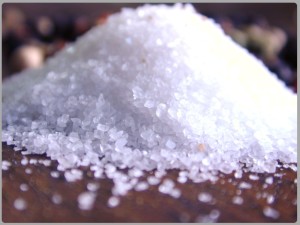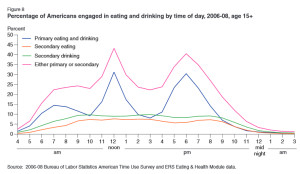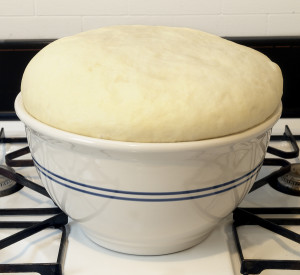Eating Challenges and the Holidays
 Food selection may become a big deal during the holidays with those with eating challenges So what are some techniques that can help during the holidays? Spreading out holiday-related events, and making get-togethers, and more activity are just a few ways to stay healthy this season
Food selection may become a big deal during the holidays with those with eating challenges So what are some techniques that can help during the holidays? Spreading out holiday-related events, and making get-togethers, and more activity are just a few ways to stay healthy this season
Spread Out Your Events
Try to spread out the parties and get-togethers, instead of visiting several households on the same day If there is an event where the cooking is shared, start a Facebook group page to better organize the dinner and ensure there are plenty of healthy options Each member can discuss what they are bringing to allow a wide variety of colors and choices rather than an overload of starches. You can also use this page to share recipes
Move at the Party
Holiday gatherings often consist of sitting, eating, talking, drinking, and more eating We often find ourselves sitting for longer periods of time because we enjoy the conversation Your legs want to move, the food is on the counter, and off you go for food you’re are not even hungry for This year, try some of these actions with the family to reduce the march to the kitchen Take a walk or try some other physical activity
Don't Go Overboard
Sticking to a healthy plan is important However depriving yourself of certain foods can have negative results Restrictive eating can lead to binge eating as well as disliking healthy foods by associating them with something you ‘have’ to do When it’s time to pile food on your plate, eat what visually appeals to you, or you know you love without guilt clouding the mind Try these final tips for holiday eating If smaller plates are an option, use them. You’ll fill larger plates just because room is available. Second trips are better than overeating on the first round If you’re trying something new, only take a bite-size portion
As you begin to incorporate more healthy practices into your life—whether during the holidays or during everyday life—your mindset will start to shift, and you’ll begin to not only choose more nutritious foods, but actually enjoy them, too
Read More
The Salty Taste: 5 Ways to Avoid Inflammation
 The energy science categorizes food according to taste(rasa which has an effect on the energy patterns of VPK), virya(effect that food has on our small intestine and tissues), vipak(effect that food has on our colon and cells), and prabhav(effect that it has on the DNA of our cells) This makes the interpretation of how foods affect us quite complex and explains why the nutritional formats at foodsheal.com are useful because they simplify our understanding of foods and allow us to make healthy balancing food choices that help treat disease states
The energy science categorizes food according to taste(rasa which has an effect on the energy patterns of VPK), virya(effect that food has on our small intestine and tissues), vipak(effect that food has on our colon and cells), and prabhav(effect that it has on the DNA of our cells) This makes the interpretation of how foods affect us quite complex and explains why the nutritional formats at foodsheal.com are useful because they simplify our understanding of foods and allow us to make healthy balancing food choices that help treat disease states
To recall the qualities of Vata(cold, light, mobile, dry, rough, subtle, clear) and Pitta(hot, light, spreading, sharp/penetrating, liquid, oily) and Kapha(heavy, slow/dull, cool, slimy/smooth, liquid, dense, soft, hard, static, sticky) give rise to disease in the mindbody These qualities combine in various combinations to produce the diseases due to their physiologic excess
The key to understanding the energy science disease model is to begin to appreciate the imbalance in qualities that occur in the mindbody physiology and how you bring about the imbalance As we have discussed in the past the primary way we go out of balance is through foods
The Unique Salty Taste
The energy science of Ayurveda recognizes that there are 6 tastes called rasas(sweet, sour, salty, pungent, bitter, and astringent) that allow us to scientifically study foods and their intimate impact on the mindbody energy field These tastes are typically in combination with one another in foods For example, seafood(meat that has lived its life in saltwater) has a salty rasa or taste energtically even though it doesn't taste salty Due to protein of the meat it has a heating vipak, and the dense and heavy qualities of seafood produce the sweet taste as the vipak energetic influence
Aside from seafood, mineral salts such as sea salt or table salt and surprisingly cottage cheese are the only ways we encounter the salty taste in foods so the salty taste becomes our first encounter with the concept of a "culinary spice"salty cottage cheese
The qualities of the salty taste are hot, light, liquid, soft, smooth/slimy, and subtle From the above qualities of Vata we can appreciate that the mobile quality will be reduced by the slimy/smooth quality of salt but Pitta will be increased due to the hot quality Because the salty taste carries the hot quality it will be aggravating to people with high Pitta
Due to the hot quality salt produces inflammation and due to the liquid quality it produces its well known congestive effect with fluid retention
Since rasa(taste) has an influence on our mindbody through the qualities of the foods that we take in, if we get an excess of the salty taste it can produce with the hot and liquid qualities, impatience, irritability, and easy frustration
As advertised in potato chip commercials, "Bet you can't each just one", implies that the salty taste can be addictive This addictive like characteristic of salt is why ALL fast food chains use a lot of the salty taste in their food preparation
Due to salt's penetrating and hot qualities it can be very effective in massaging and warming muscles and so soaking in epsom salt baths becomes valuable Another use of salt is with neti sinus wash that reduces Kapha mucous in the sinuses where it accumulates This is the experience everyone has with the common cold Neti uses a salt solution since tap water will burn the delicate mucous membranes But salt also is important in mobilizing with its hot quality the cool, slimy/smooth, liquid, heavy, dense, slow/dull, and static qualities of Kapha which are those of mucous
5 Takeaways About the Salty Taste
When it comes to high Pitta disorders(anything with inflammation) there are some basic things to remember when it comes to the salty taste
Avoid salt at the dinner table
Avoid all seafood Eat fresh water fish
Avoid all fast food
Avoid salt in food preparation at home
Avoid cottage cheese
Read More
Eating Biorhythms
 Biorhythms of sleep have become well recognized patterns and research has shown that they are intimately associated with health and the prevention of disease For example, people who work night shifts are more prone to health problems But the energy science of Ayurveda also gives us a biorhythm of eating which if adhered to improves the entire digestive process and supports this important concept of agni that I've talked about in the past
Biorhythms of sleep have become well recognized patterns and research has shown that they are intimately associated with health and the prevention of disease For example, people who work night shifts are more prone to health problems But the energy science of Ayurveda also gives us a biorhythm of eating which if adhered to improves the entire digestive process and supports this important concept of agni that I've talked about in the past
The biorhythm research data confirms what the energy science gives us as guidance about eating and rest As a matter of fact most contemporary research continues to support what the energy science talks about regarding prevention of progressive disease If we are plagued with disease of any kind, then we certainly don't want to get worse
The Eating Biorhythm
Since we are part of Nature(if you don't agree then show me how you remove yourself from Her) we will naturally flow with Her rhythms I just alluded to the health problems that occur when we don't go to bed with Nature and wake up with Her So it is with our eating biorhythm cycle
If we don't take our biggest meal when Nature is doing so then our digestion suffers Our agni or digestive power is maximal at between 11a and 2p Even if our agni is suboptimal the point is that it will be as good as it can be around the noon hour This is completely compatible with what our ancestors knew before we became accustomed to "city life" where schedules for a healthy lifestyle are abandoned
The energy science says that eating our biggest meal of the day at noon time is optimal for health and encourages the best chance for us to digest well What does "biggest" mean? What you can comfortably hold in your 2 hands represents two-thirds of your stomach capacity and Ayurveda's guideline is that more than 2 handfuls overdistends the stomach capacity and risks the chance to form ama or undigested unprocessed food If ama is formed due to poor agni it can escape from the GIT(gastrointestinal tract) and will spread to peripheral tissues where it can interfere with function
Eating out can be a major problem There are several reasons for this Things are done by restaurants that aren't conducive for good digestion The most common infraction is ice water Many of the entrees served in public eateries are popular but are not necessarily good for us(chocolate coffee ice cream) Many restaurants nowadays are serving incompatible food combinations The most common one is fruit with other foods
Eating Biorhythms: 3 Healthy Ways To Support
But probably the most damaging of all with our "restaurant fetish" is that it typically interferes with healthy biorhythms of eating Typically eating our biggest meal of the day turns out to be done at 7p or beyond which in the end is ama promoting Not only is it our biggest meal of the day but it's associated with all of the other ama promoting eating habits foisted on us because we're at the restaurant
So what can we do?
1 Make a pact with yourself to eat your biggest meal at noon
2 Minimize eating out...will be healthier and enhance the pocketbook If you have to eat out try to stay away from night time meals, avoid ice, eat according to your energy constitutional makeup(see foodsheal.com), and avoid incompatible food combinations
3 Breakfast is optional If hungry try fruit It should NOT be the biggest meal of the day
Read More
Health and Numbing Out

Examples of Numbing Out
Numbing out is the inability to focus on the sensory experience that is bothering us Sure we notice the pain and inconveniences that "crimp our plans" but that's as far as it goes
Whether we know it or not numbing out is in our life experience The reason I can say this with such assurance is that we all do it to some degree or another Now one might claim that it's impossible to numb out when pain is in your face day after day and that is indeed true so we should define numbing out
Reasons for numb out are several 1 Often we don't have the tools to be more present with whatever is bothering us 2 At times it's inconvenient to bother or it's the same thing day after day so why bother 3 It's quick and easy to numb out 4 We get rewarded because of the pleasure that comes from numbing out
When we become students of whatever is bothering us we bring our full attention and in so doing intention to the issue at hand This is the crux of not numbing out By stopping the numbing out process we bring intention into the equation and voila healing occurs
Common examples of numbing out
Addictions of any kind...food(aka "comfort foods"), alcohol, marijuana, prescription drugs
Not managing stress and anxiety so we numb out unconsciously
Stress and anxiety produce flightiness which is a form or "run away" which is the heart of the numbing out process
Circles not together...essentially denial of the problems at hand
Social media....great way to avoid dealing with a problem
Ways to Avoid Numbing Out
1 Journal
Be aware of insights that come about the issue and solutions that will help the problem
2 Meditate on the problem at hand
Be willing to sit, think, and talk about the issue that you want to correct
Spiritual practices sometimes help uncover the unconscious processes such as fear,stress, and anxiety
Grounded minds produce composure to sit
3 The above process allows us to observe something that comes up and not be overwhelmed by it
Read More
Getting More Energy From Your Foods
 All disease except for trauma begins in the GIT and so this underscores why nutritional habits are so important
All disease except for trauma begins in the GIT and so this underscores why nutritional habits are so important
But what nutritional habits? This is where the energy science can make its biggest contribution because the matter science molecular approach has no adequate model of disease So it becomes hit and miss recommendations So to heal any disease process one has to do this foundational work of nutrition which according to the energy science guidelines is very very important
Ten Ways to Feel Energized by Food
1 Eat Foods with High Prana
Prana is the vital energy present in fresh vegetables and fruits and pure air that we breathe From an energetic point of view one of the reasons for eating is to gain prana, so you want to choose foods that are high in prana
Incorporating more fresh vegetables and fruits in your diet will give you an immediate energy boost It's also important to cut the vegetables and cook them fresh at every meal Buying pre-cut vegetables means that you have already lost some of the prana For that reason, buy vegetables and fruits whole for maximum vitality
2 Eat Organic or Locally Grown Foods Whenever Possible
Organic foods have more prana than foods that have been polluted with chemical fertilizers and pesticides If your body has to work hard to detoxity the chemicals every time you eat with the liver, you'll feel fatigued and toxic
Locally grown foods are also higher in prana, because they don't have to be shipped or stored and can be bought tree-ripened There is another reason to eat locally grown foods--they contain the same ratio of the five fundamental levels as the climate in which you live
One ayurvedic principle says that equal proportions of the elements is always enhancing Locally grown herbs, fruits, vegetables and dairy products will have a more powerful and energizing biological impact Herbs and plants grown in the desert are more helpful for the people who live in that kind of dry, hot climate
This principle doesn't apply to grains or beans, which are grown in different regions And if you can't get locally grown veggies or fruits, it's better to eat imported produce The point here is that if you have a choice, buy or grow local produce for more vitality
3 Avoid Eating Dead or Unintelligent Food
Just as fresh produce has more prana, food that is old, dead, or heavily processed contains very little life force Frozen, canned, packaged, processed, bottled, fermented or leftover foods are either too old to be healthy, or even worse, have been altered with chemical preservatives and flavorings This kind of unintelligent, dead food is difficult to digest and creates ama, which clogs the body's channels and creates fatigue Choose food that is fresh, whole and unaltered by chemicals or harmful processing methods
4 Eat Energizing Foods
Besides fresh, organic fruits and vegetables, an energizing diet includes whole grains such as quinoa, barley and amaranth For protein, organic milk, lassi (a yogurt drink), paneer(fresh cheese) are energy-producing Almonds, cashews, or walnuts are an excellent source of protein if they are soaked first or cooked with the grains to make them more digestible Split-mung dhal and other small or split beans are an excellent source of protein Some delightful foods that are also excellent sources of protein are Milk-date Shake and Rice Pudding
Rice Pudding
Ingredients:
1 c. water
1/2 c. basmati rice
4 c. whole milk
1 tsp. chopped dates
2 tsp. cashews or pistachios
3 small pieces green cardamom, crushed
1 tsp. sugar (or to taste)
Directions:
Soak rice in water for 2 hours Boil milk Add rice and all other ingredients Boil slowly for 30 minutes or more until the mixture reaches a slightly thick consistency, but you can stir it easily It will thicken a little more when you let it cool
Fresh, easy-to-digest oils are another important part of the energizing diet Ghee is an excellent cooking oil or baking oil because it doesn't burn at high heat Extra virgin olive oil from the first press is healthy for baking or sautéing at low temperatures
5 Eat a Variety of Foods
Rather than getting in a rut and just making rice, dhal and the same vegetables every day, be sure to rotate your selection so you are always getting a wide variety of grains, fruits, vegetables, proteins and flavors
Ayurveda recommends that you eat all six flavors--sweet, sour, salty, bitter, astringent and pungent--in every meal If you are getting bored with your food, or if you are having cravings for unhealthy foods, that's a clue that you are not getting all six tastes You can take the guess work out of food selection by going to foodsheal.com to see what foods are best for you
One way to add more flavor and fun is to use Peach Chutney and Mango Chutney to complement the food. Each contains all six tastes, adding zest and energizing spice to the meal
6 Cook with Energizing Spices
Cooking with spices makes the food more digestible and creates energy The ayurvedic way to cook with spices is to sauté them at low heat in olive oil and ghee, then stir them into steamed vegetables, cooked grains, or soupy dals An alternative method is to sauté the spices in Ghee or olive oil and then sauté the raw vegetables, grains or dal Add water and cook until tender
Choose spices that are recommended for your body type Spice mixtures called churnas can be made from recipes at foodsheal.com
7 Avoid Energy-Draining Combinations
Avoid foods that don't digest well when combined Combining the following foods create ama and low energy
8 Drink Energizing Water
Drinking lots of coffee, tea or caffeinated soft drinks may give you a false burst of energy, but caffeine taxes the liver, creating a toxic build-up and fatigue It's better to drink beverages that clear toxins from the channels of the body
9 Minimize Restaurant Eating
If you must eat out, choose your restaurant carefully Keep an eye on the ingredients and cooking methods. Are the ingredients fresh or frozen? Are leftovers served? Are there healthy oils? These are the questions you can ask
10 Eat in a Settled Atmosphere
Ayurveda recommends that you eat in a settled atmosphere to gain maximum vitality from food If you talk on the phone, watch TV or conduct a business meeting over lunch, your food is not going to digest properly It will probably create ama, which is the cause of dullness and fatigue. Eating while standing, walking or driving also creates ama rather than energy
Turn off the electronic devices and eat with someone you care about Leave your responsibilities at the door--and instead revel in the beautiful colors, tastes, smells and textures of the food All of this amounts to respecting your food and your digestion, and will help create the kind of light, clear, vital feeling that good food is meant to do
Read More
Yeast and Dis-ease
 While naturally occurring yeast in our nutrition is healthy, in the West we have become excessive users of yeasted products primarily in the form of bread products and pastry This adversely affects the bowel flora or the microbiome of the gut because yeast overgrowth is a definite complication This is why yeasted bread products are listed in the No column in the energy science nutritional formats
While naturally occurring yeast in our nutrition is healthy, in the West we have become excessive users of yeasted products primarily in the form of bread products and pastry This adversely affects the bowel flora or the microbiome of the gut because yeast overgrowth is a definite complication This is why yeasted bread products are listed in the No column in the energy science nutritional formats
Energetically the sweet taste soothes the nervous system Even though we grow up with the sweet smell of oven baked bread and yearn for the sweet taste in its many different forms unfortunately the yeast in bread products can do a number on our gut flora This is why if we look at the planetary nutritional habits we'll see that 80% of the population uses flatbreads as a way of taking their grains which have naturally occurring yeast, not yeast that has been artificially added to produce the puffiness of the dough
Dis-ease and Yeast
What does yeast have to do with dis-ease in the energy physiology?
Think about what yeast does to dough as it rises The excess yeast in the dough produces the hot quality during the rising process We can feel that hot quality on the sides of the bowl as the process is occurring This hot quality is delivered to the GIT and produces an additive effect to the already present hot quality in the gut As you may remember it's the hot quality that produces many of the symptoms of dis-eases such as gastroesophageal reflux(heartburn), diarrhea, inflammatory bowel dis-ease, and inflammatory joint dis-ease
But what else are we observing? The dough begins to "rise" This rising is an result of the CO2 gas being produced by the yeasties as a byproduct of their metabolizing of sugars in the flour The result energetically is the qualities of cold, light, mobile, dry, rough, subtle, and clear are being added to the GIT when we consume yeasted products These qualities of gas lead to a build up of the Vata energy pattern in the GIT
Vata is a primary player in all dis-ease processes in the mindbody and in particular 80% of dis-eases that are seen So you can see how very important it is to limit the influence of Vata in the body
What To Do About Dietary Yeast?
So there are a number of different lifestyle behaviors that you can take on that will make your gut a happier place
Use flatbreads such as sprouted wheat tortillas, pancakes, or corn tortillas(corn should not be used for PV energy makeup)
Consume naturally occurring yeast found in all grain flours We don't have to go looking for this because it's naturally there for us
Avoid the bakery section in grocery stores As Vata pacifying as it may be this section of the store should be off limits
Scones which are a great bakery good without the yeast
Don't supplement with yeast This seems obvious but in many matter science health communities we find recommendations for yeast supplementation While this may be a good idea from a molecular point of view it makes little sense from an energy science perspective
Toast the bread if you have to have it so that the residual yeast and the Vata qualities are not consumed
Read More




